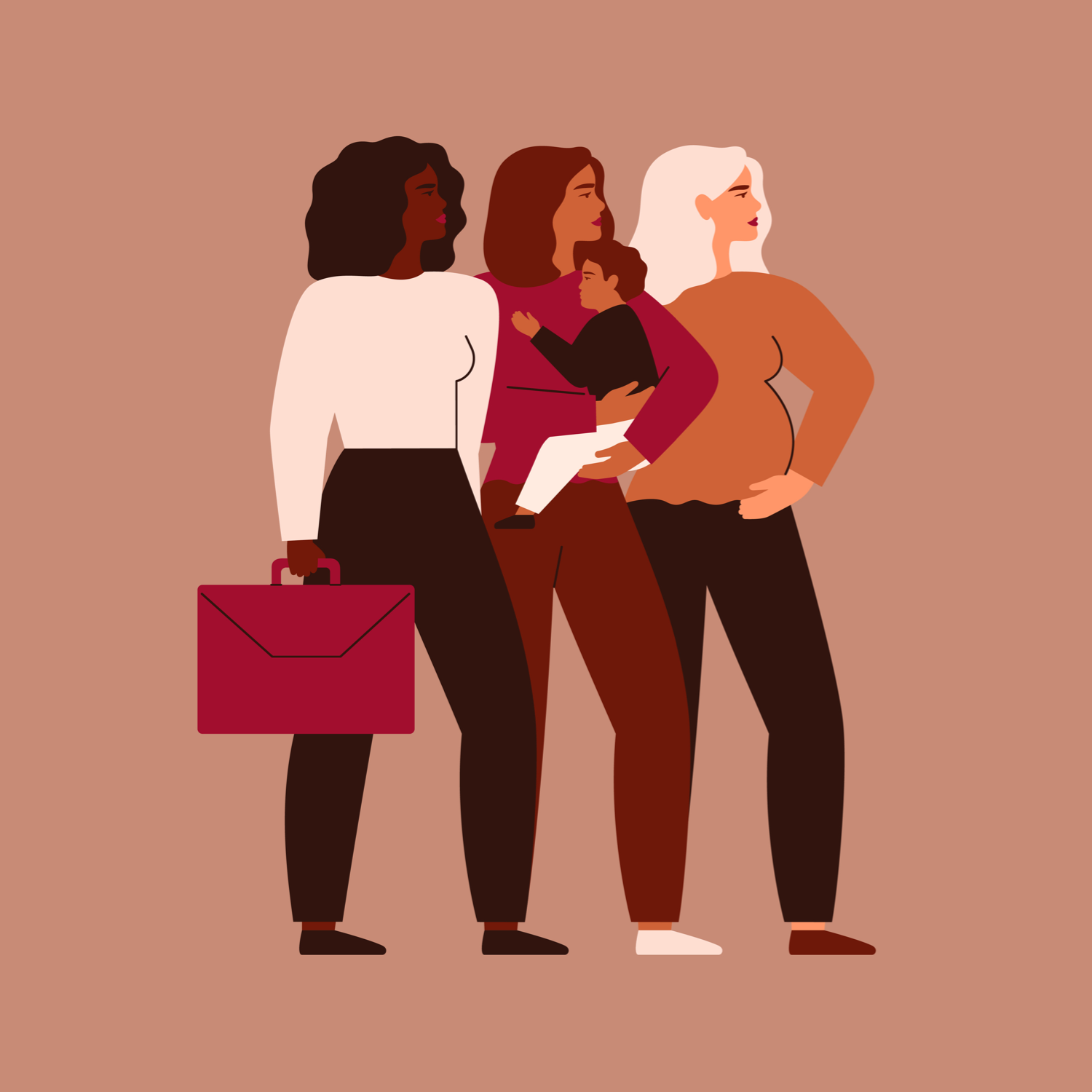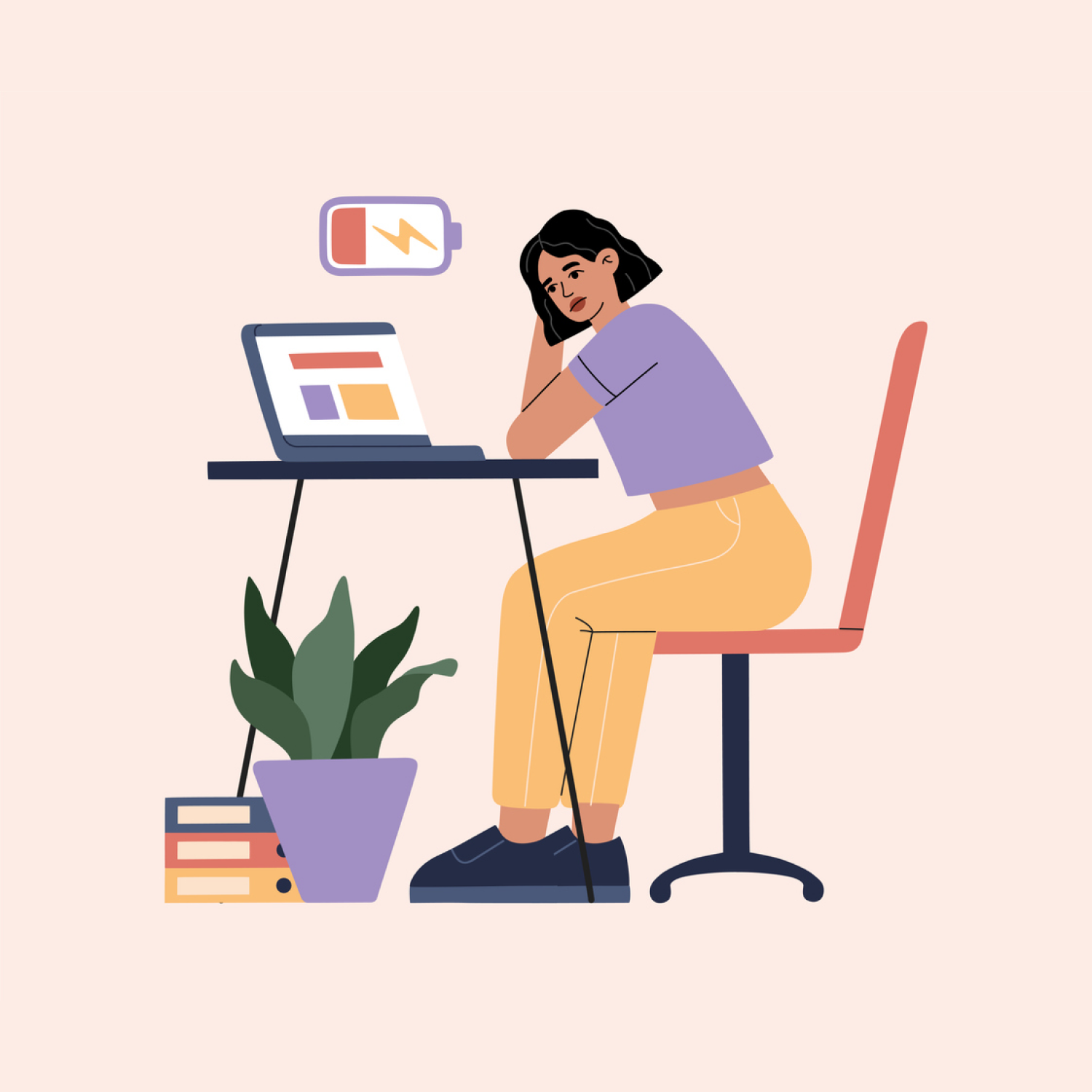School Closures Disproportionately Hurt Working Moms—Especially Single Ones

When Mellissa Gorecki’s son was in school, she would see about six clients each day at her eyelash extension business based in her Brampton, Ont. home. Now that her five-year-old watches his teacher through a laptop in their living room, she’s had to cut her availability down to two or three appointments per day. Between helping her son with his virtual school work and looking after her toddler, who is also currently at home since his daycare had COVID exposure, working full time has become nearly impossible.
Gorecki is a single parent who supports both of her kids through her business. Virtual learning is affecting her eldest child’s mental well-being, as he misses his friends and routine, but it’s also affecting her income. “I have to block off time right now when people can’t book appointments because I have to attend to my children,” Gorecki says. Every time schools reopen, she has to build back up her schedule to make up for lost income. “It’s not like I can just stop working…we’re in survival mode.”
Parents like Gorecki are dealing with Ontario Premier Doug Ford’s recent announcement that schools are once again closed and classes will be conducted online until at least January 17 due to the surge in Omicron cases. Other provinces also paused in-person learning earlier in the pandemic including Nova Scotia, Alberta and B.C., and Quebec made the call to shut down schools again this past December.
While virtual learning has affected all parents (and students) of various circumstances, school closures have disproportionately affected working mothers—especially single ones and those who can’t work from home. Experts say that the implications of caring for children in the home throughout the last two years while balancing work is having professional repercussions and causing women to leave the workforce, scale back on hours or miss out on career advancements. For racialized and lower-income women, these effects are compounded.
“I am seriously concerned that the consequences of this are dire,” says Ivona Hideg, an associate professor at York University’s Schulich School of Business whose research focuses on gender equity, diversity and inclusion in the workplace. According to Hideg, the participation of women in the workforce right now is similar to the levels we saw in the 1980s—something she considers a huge setback. “Gains we made in the gender equity space have fallen,” she says, “and it’s going to take us years to build it back up.”
Women’s careers are taking a back seat
Research indicates that when schools close, women’s careers are disproportionately affected. A recent report by the U.S.-based Brookings Institute shows that virtual or hybrid schooling is associated with decreased participation in the labour force among parents with young children. On top of supporting kids with online school, the Brookings report cites additional circumstances, like the fact that women are more likely to work in retail or hospitality—jobs that are in-person and/or experienced shutdowns during the pandemic—as factors contributing to the decline in their participation in the workforce. Hideg says Canadian data paints a similar picture as moms—especially racialized ones or ones from a lower socioeconomic background—are hardest hit by school closures.
“We’re in survival mode”
Because women typically carry the brunt of household and childcare duties, their careers often take a back seat if their personal responsibilities increase. This means even if women are still working, they may need to take time off or miss work, which can affect their income and ability to get things like a promotion or raise, in order to help their children—an extension of the “she-session” we witnessed at the start of the pandemic when women lost jobs or quit work to look after their kids during the first lockdown.
According to research out of Washington University, the longer schools remain closed and women are sidelined from the labour force, the more difficult it may be for them to recover from prolonged periods of non-employment. In other words, school closures can affect their lifetime earnings.
Gorecki, who is self-employed, is seeing this in real-time. Once her availability to take on clients dwindles, it has a ripple effect. “Clients are afraid to book appointments with me because lash extensions are an ongoing service—it’s something you maintain,” Gorecki says. “People don’t want to invest their money in starting that with me if they can’t easily book maintenance when my schedule suddenly changes. They’re going to my competitors without children.”
Solo parents who are the primary caregiver but can’t work from home also face tough situations. Lora Sousa, the owner of a Toronto-based hair salon, takes care of her 10-year-old child who is in virtual school. When salons were mandated to close during the pandemic, she could stay at home and help her son with online learning, something many kids need—especially younger ones. But now that she needs to be physically at her business, her child often goes to his grandmother’s house so he has supervision. Until schools reopen, Sousa says she will likely work three 12-hours days in a row, then take time off to help her child and relieve her mom.
“You try to do what’s best for your child, and you’re also trying to do what’s best for the business,” she says, adding that her business is only at 20 per cent of what it was pre-pandemic. “It’s a struggle, because the business is also what’s best for the child.”
How workplaces can better support women
There are ways that workplaces can support women, starting with an understanding that mothers, in particular, are facing an incredibly difficult time, Hideg says. This means acknowledging and accommodating for the fact that women may not be able to do the same work hours as men right now, or that productivity may look different across gender lines.
Workplaces should also lead by example and model healthy work-life balance and inclusive policies. Hideg says leaders—especially men—should make it clear if they have children learning at home and need to accommodate for it. “You should be communicating that you’re not taking meetings during certain hours because you’re helping your children do online school,” she says. “Set this example for others in the company by being explicit about what you’re doing.”
Not only do men need to lead by example, but workplaces can also take proactive steps to help working-mother employees. This can be done through managers clearly establishing flexible work hours and granting employees breaks or extensions on work before they have to ask for it.
“You try to do what’s best for your child, and you’re also trying to do what’s best for the business”
Of course not all professions can have flexible work schedules, especially for women who do shift work or are self-employed. That’s why Hideg says that on a governmental level we need more affordable childcare to better support working parents. Ontario has some of the most expensive childcare in Canada. For parents who can’t afford childcare or a sitter to assist with schooling, it is the women who are often left reducing their work hours to fill that gap. “Even before the pandemic, childcare has not been accessible to certain women in our society, like women of colour, Indigenous women and women from lower socioeconomic backgrounds because it is so expensive,” Hideg says. It’s a vicious cycle: If women are more likely to leave the workforce during the pandemic, they are less likely to be represented in workplaces and gender equity suffers.
That’s one reason why it’s important that workplaces hire, retain and promote women during the pandemic and beyond, Hideg says. Employers should make an effort to understand circumstances around gaps in employment history and work to address gender equity in their workplace. Hiring managers need to acknowledge the effects the pandemic has had on women: “There was a huge, unexpected and out-of-control event that happened,” Hideg says. “And it inadvertently impacted women more so than men.”









